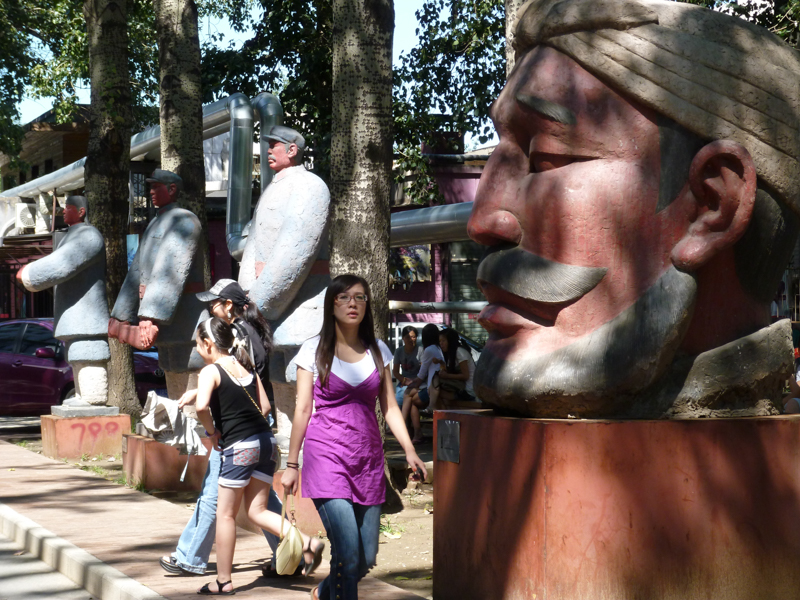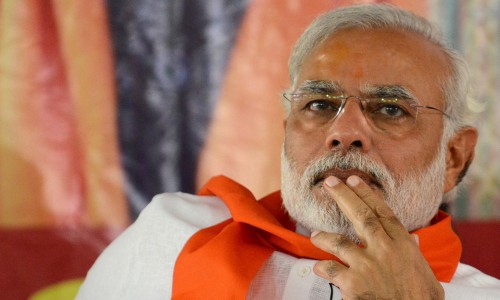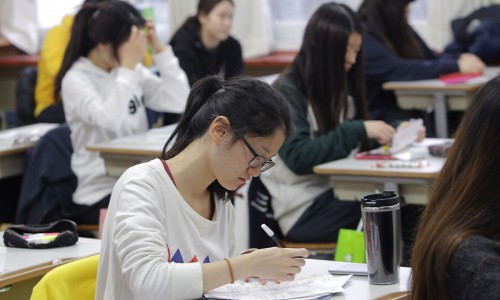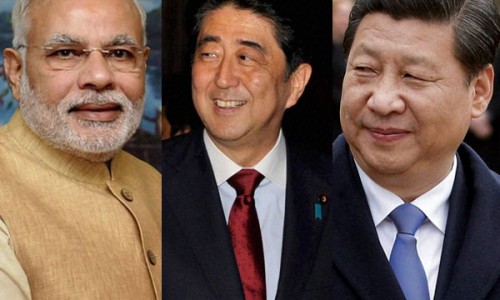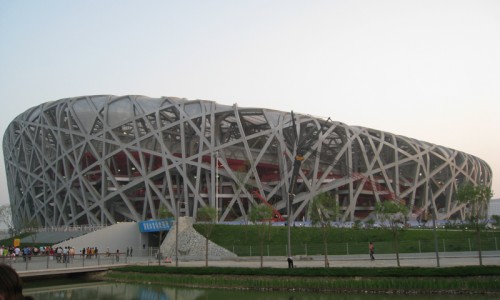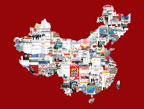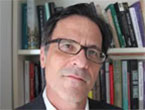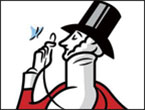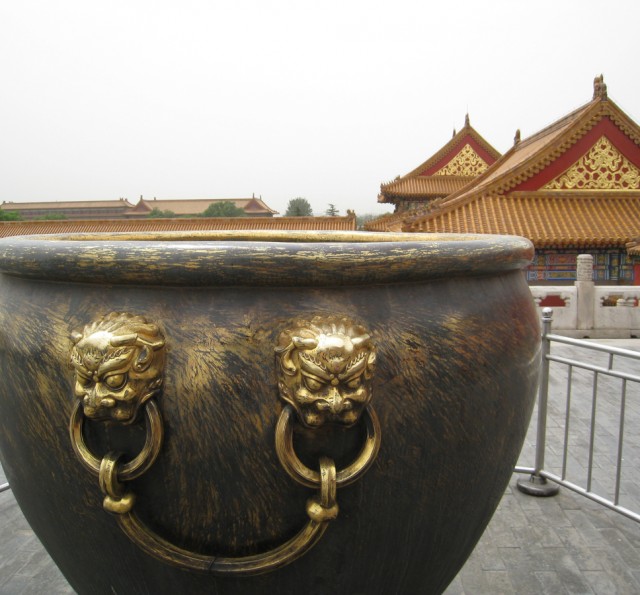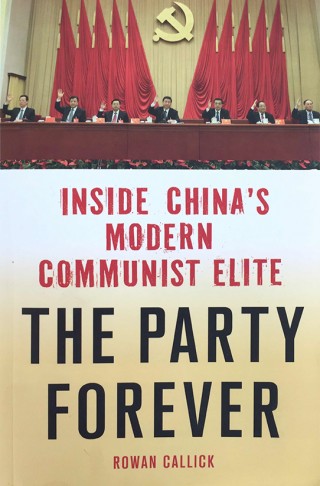Published on Melbourne, December 16 2008
China is changing. But it helps, it especially helps in China’s case, to get its story right. There are always different takes on history. If you read my review in last weekend’s Australian of the ground-breaking new book The Age of Openness, China Before Mao, you will have seen how China’s modern history has been written, by the victors of course as usual, from the templates in this case of revolution and of centralization. As the author Frank Dikotter says: “The era between empire and communism is routinely portrayed as a catastrophic interlude… (but) the extent and depth of engagement with the rest of the world was such that we can see closure under Mao instead as the exception.” Thankfully, the communist party has turned back to openness in order to secure its legitimacy through economic growth: the golden chopsticks instead of the old iron ricebowl of a job – of sorts – for life. That shift is inspiring big celebrations in Beijing this month. But they should be accompanied by a rueful and apologetic backward glance at what was lost when the civil war was won in 1949.
China suffered immensely from the three Maoist decades that followed. It remains far behind Japan, South Korea, Taiwan and Hong Kong in terms of living standards, ordinary freedoms, and the rule of law. But in respect of the former, in terms of living standards, its people have at last, in the last 30 years, started to catch up – and are indeed insisting that this continues.
The big question now, for the central committee of the party especially, is… what happens if that marathon race towards economic security slows to a walking pace, or even slews to a halt. What then is left of that legitimacy? The party has a natural aversion to such open questions, and is seeking to help cement its legitimacy through its grasp towards a harmonious society, and through a carefully constructed nationalism.
Here’s the history of the People’s Republic from the viewpoint of its rulers, in four short sentences:
1949: only socialism could save China. 1979 (following the cultural revolution): only capitalism could save China. 1989 (after the Soviet demise): only China could save socialism. 2009: only China could save capitalism.
This is a week in which China is looking back – to 30 years ago, when Deng Xiaoping launched the kai fang, the open door, era.
The opening meant some price signals, foreign investment that brought with it new technology and new management skills, and most importantly for its early success, liberating farmers from their enforced communes to return to family-focused plots. Not any meaningful political role for the masses. Power still comes from the top down, while revenues are expected to come from the bottom up. When I talked with a Chinese friend about how I had made contact with the taxation office and negotiated a monthly sum, he said I must be mad. No one he knows pays tax, he said – and anyway, it’s immoral; why give money to people when you have no say in how it’s spent?
China’s top leaders have been praised for the country’s modernization, and applauded for their apparent capacity to enforce change by diktat – with some foreign admirers forlornly wishing that democratic societies could be directed with such decisiveness.
But much of China’s rapid change can be attributed to the determination of its “masses” to carve out better lives for themselves and their children come what may, with the party’s legitimacy relying on its capacity to shift its tactics, even its values, in response to demands from below.
The Tiananmen demonstrations of 20 years ago served as a wake-up call to the party. While with one hand it cracked down on the demonstrators themselves, with the other it responded by ceding more space in the economic realm. Progress has happened as a result of individuals seeking, finding and exercising steadily more space in which to move – in which to start, develop and expand a business.
Government has enough on its plate to meet the growing demands on its services as China transforms itself into a modern, chiefly urban culture, without fighting a rearguard action for every inch of its economic turf. And as it has conceded space for people to build businesses, this has become perceived not so much as a favour, an act of generosity on the part of a usually omnivorous authority, but more as a right.
This is new ground in China, whose communist dynasty constitution guarantees many rights, but has circumscribed them with so many administrative regulations and caveats that – especially since China still lacks independent courts – they have become like gifts handed down from on high, readily withdrawn again. In contrast, the space – the de facto right – obtained by its constant personal exercise by many millions of people, is all but impossible to withdraw. This is now inching forward, from the right to own private property, to the right to start a small business, to the right to personal expression – though still not, in this case, to disseminate that personal view widely.
And now, it seems likely after 100,000 volunteers poured in to Sichuan after the quake, we shall see more space open up as an appropriated right, for private charity and volunteering. This period of two nationalisms – one angry and anti-foreign, one positive and empathetic – is forming the rising generation’s version of a Tiananmen Square experience.
The setting appears benign, from the party’s perspective; it was praised for its quake response. But even without expressing out loud any demands, the actions of the volunteers articulated them: “We no longer view the party and the People’s Liberation Army as sufficient proxies for us, we want to be actors too, in helping the afflicted.” So centimeter by centimeter, civic space is carved out, just as was space to do business. The question now, is when and how the party will find a way to regularize this inexorable trend.
Many observers are awed by the apparent pace of change in China. And for the laobaixing, the ordinary folk, life has perhaps never been better; but the same can be said for people around the world. Despite the physical modernization, the core institutions of state have changed little if at all in 60 years. Will China’s next chapter see such change? I wouldn’t bet on it. Just as I wouldn’t bet on Chinese failure or implosion; that has been a losing bet ever since the kai fang strategy began. Inertia is a more likely winner.
It was not a promising sign, that just about the only prominent figure who appeared to be missing from the rows of leaders at the Olympic opening ceremony was the premier who secured both the Games and China’s crucial accession to the World Trade Organisation – the single-minded Zhu Rongji. Such outspoken figures do not fit today’s template. Zhu grasped the nettle of state owned enterprise reform, as we have seen, laying off millions of workers in order to save the sector that is now helping power the whole economy, along with the mostly privately owned and foreign invested manufacturing sector, and is starting to provide the government with crucial revenues to help fund its overdue welfare provisions.
Since Deng Xiaoping went to Mao – or perhaps to somewhere else, maybe to Adam Smith or Lord John Maynard Keynes – the party leadership has evolved from a charismatic figure to a collegiate group in which no single person tends to dictate policy. It appears that all significant party factions are consulted until a consensus eventually emerges. A strong voice, in this scenario, can veto or delay reform for years. The upside, for the leadership, is the smoothest transition process in Chinese history. We can now know, for instance, that barring a shocking turn of events, Xi Jinping will take the top job from 2012 until 2022, during which Li Keqiang will be Premier.
The present Hu Jintao-Wen Jiabao team have slowed the appreciation of the yuan to protect exporters, pushed state funds into the ailing share markets and earlier this year addressed inflation through capping prices, including of energy. In political administration, it is also a case of one step forward, one step back. Following recent riots in Guizhou over the handling of a rape case, and following the revelations in Sichuan after the earthquake that thousands of children died needlessly in “tofu” buildings in their schools – firm outside but squidgy inside – the government issued an instruction that local officials must listen to people’s complaints, “upholding legal rights and promoting social harmony and stability” – while denying parents access to legal redress. The same is now applying to the families whose babies have died or become severely ill in the melamine milk scandal.
The party’s top priority to date has been its very control of every area of national life, which it uses not in lieu of legitimacy but as a source of it.
But this is not to deny the move at the same time to broaden the ruling ethos from Deng’s “to get rich is glorious” to Hu’s “harmonious society” echoes Confucian humanism and noblesse oblige. China, while in many regions remaining poor, is also facing the challenges that come from economic success, including terrible pollution, and epidemics of the diseases that accompany a changing lifestyle including heart disease and cancers.
These are tests that would challenge any ruler. And the party is well aware of the many precedents for those who have overseen a spurt in national development, to face then – when they expect only applause – especially grave challenges to their power. Suharto in Indonesia, the military presidents in South Korea, the Kuomintang in Taiwan, are among the examples.
Thus the purpose with which the party has moved, since 1989, to co-opt the intellectual and business elites, making full use of the immense resources now at its disposal – although the 20th anniversary next year of the Tiananmen massacre will provide a challenge for it to steer through.
The party is extending its influence in the private sector, with branches being widely established in corporations, and entrepreneurs becoming party members. If you are invited to a banquet by potential business partners in China, pay special attention to the person who claims to have misled his or her name card. They haven’t, of course; no one forgets name cards in Asia. They are almost certainly the party rep, the person whose view counts for most. But because they don’t have a corporate title, may be dangerously neglected.
When Jiang Zemin, Hu Jintao’s predecessor as general secretary, led the redrafting of the party’s constitution six years ago to permit capitalists to join, many Westerners interpreted this as a sign that businesspeople were eventually going to take over the party, as part of the apparently inexorable shift of a modernising China towards liberal democracy. But no. China is not taking steps towards becoming a liberal democracy that might be recognisable in the West. And the party’s opening up actually served a different goal entirely: bringing the business sector more palpably within the party’s influence, with business leaders and employees becoming absorbed within party structures. I recently visited the extraordinarily opulent, park-like headquarters in Shenzhen of Huawei, now one of the world’s top four telecommunication equipment designers and providers, with the likes of Ericsson, Cisco and Siemens. It was founded by a former People’s Liberation Army officer who still runs what is often held out as China’s model new private corporation. Its shareholding is a little mysterious, but generally 80 per cent is said to be held by employees. How is the board appointed, and to whom is it answerable? Employee shareholders play a role, I was told by a suave public affairs manager. But who has the final say? Well, the manager said, the board also of course answers to the party committee – whose very existence does not appear in any of the company’s glossy, multilingual brochures.
The party schools in every province and major city – in effect, administrative finishing schools – are sumptuously appointed. Upwardly mobile young corporate managers are strongly advised, for instance, to invite their former professors to give lectures to their state enterprise or private company colleagues, for which the corporations are expected to pay the professors handsomely. A Hong Kong politics professor friend told me that his colleagues in mainland China now complain they can’t find any spaces left on campus to park their cars. Young educated Chinese are increasingly seeking jobs not so much with multinational corporations as with government agencies, because while the pay remains poor, the other perks – including the access to assets – can be immensely rewarding.
These young people – quite well educated, sometimes overseas in Western countries, maybe from privileged, party-loyal families – form the core of the “new Nationalists” whom the world saw surge forward to demonstrate against Westerners’ own protests over China’s governance of Tibet during the international pre-Olympic Games torch relay. We are likely to see more of this in China’s next chapter.
Wang Xiaodong, an intense leader of the China Youth and Juvenile Research Centre affiliated with the Youth League – the core power base of Hu Jintao – has become a widely published cheer-leader for this new nationalism. The younger generation, he told me a few months ago, “has more contact with the West, they understand it better. They speak more fluent English. They know Westerners are not really angels, they realize that they are different from us not only in ideology but in national interests. The younger Chinese have learned a stronger sense of individual rights from Westerners.”
He said: “Some Westerners are saying that Chinese must make an effort to make themselves accepted by the West, That is an out-dated opinion. The West must learn how to make itself accepted by the Chinese.” The new generation, he says, rejects Mao Zedong’s socialism but embraces his nationalism, while also tentatively re-adopting some traditional Chinese values. China’s current leaders are essentially administrators, he says – but when today’s students succeed them, “China will globalize its national interests, and this will affect not just our close neighbours but the whole world. It must gain the capacity to protect those interests.”
Wang’s views may seem extreme, but they are sufficiently mainstream in China for him to be granted widespread access to the mass media, especially frequently in Global Times, a more popular and raucous offshoot of People’s Daily.
The awareness of China’s rulers of the awkwardness of the period they are now entering, also helps explain their strong focus on introducing a safety net, a welfare system that also provides the confidence to consume rather than to save every spare cent, and thus helps the economy too, to rebalance away from over-dependence on exports.
Progress is being made, but it’s slow – and local leaders throughout China feel under contradictory pressures: maintain rapid economic growth, keep attracting investors, but also cut pollution and invest in social infrastructure.
The big event of the past week has been the publication of the ’08 Charter, by at first 300 then a further 400 leading figures – former party figures, retired newspaper editors, academics, businesspeople, others calling themselves peasants and workers.
Liu Xiaobo, a 53 year old philosophy professor from Renmin Daxue, was seized at his home a week ago for his role in drafting the charter, and his wife still has no clue where he is. Others involved have been hauled in for questioning, and later released.
The party is very worried. It does not at all like the charter’s appeal for federalism, for the rule of law, for democracy. But it especially fears its clause on the one-party state: “Public institutions should be used for the public. Realize the nationalization of the armed forces. The military shall be loyal to the Constitution and to the country. The political party organizations in the armed forces should be withdrawn. All civil servants including the police shall remain politically neutral. Discrimination in employment of civil servants based on party preference should be eliminated.” No wonder this last week’s big crackdown.
The party is the great constant in the China story today. It has become the world’s most powerful institution, – yes even more so than the Vatican, or Collingwood football club. China’s leaders now emerge almost entirely from within the party’s regional command structures, not from central government agencies.
Looking over the next dzen years or so, what do I see? The party will remain in firm control without significantly devolving power; that the commanding heights of the economy will remain in state hands, although this no longer means the Marx definition, ownership of the means of production, but instead, ownership of the logistics of control in the broadest sense, from airlines to telecommunications to banks; that China will continue to champion globalisation, but will increasingly wish to dictate terms, as it and India are doing over Doha and over the successor to the Kyoto Treaty; that it will maintain close relations with the USA – of which it holds $US 600 billion Treasury bills – while also emerging as the leading influence in the strengthening big power group within Asia, with an important meeting held last weekend with the leaders of Japan and South Korea; that China will become an ever more attractive model for developing country leaders, while its own international model will remain Singapore; that its economy will evolve up the value scale, reducing its resource intensity per GDP kuai, but gradually, and while the soft landing persists for the next three or four years before we get a real pick-up – the 4 trillion yuan stimulus package is about 75% comprised of rebadged items from the current five year plan that ends in December 2010, and much of the cash has to be found by regional governments, with 1.8 trillion to be spent on infrastructure and only 40 billion yuan on social services, whose total share of GDP (health, education, welfare) remains below 6% of GDP. In 1997 the government promised to spend 4% on education, it remains about 2.8%. The demographic convulsion (a one-child policy following populate-or-perish) will boost educational skills while causing grave economic challenges, requiring higher productivity and greater returns on capital at home and abroad; and Confucius’ come-back, signalled by party slogans using phrases such as “harmonious society” and dramatised in the Olympic Games’ opening ceremony, will provide some moral and philosophical content lacking since Maoism, though not Mao, were discarded. In general, one can anticipate not just the survival but the reinforcement, of what American sinologist Andrew Nathan calls “resilient authoritarianism.”
But as a new generation of urban middle class emerges, it is inevitable that they will feel less grateful for their comparative material comfort, that they will start to take this for granted, and that their concerns will move on. The environment is already a core concern among young urban Chinese, and it is likely to prove difficult for the party to keep their interests corralled safely within the nationalist compound. Younger Chinese friends were largely disappointed with the opening ceremony of the Olympics, saying that it represented the way the party views China – or would like it to be viewed – with thousands of young soldiers beating drums in absolute precision, but that it failed to seize the opportunity of presenting the human face, what they see as the true face of China to the world – the unkempt, ironic, chaotic, human China that has been mostly confined over the last few decades – except after the Sichuan quake – to private spaces.
This controlled pattern of development in the People’s Republic fits more closely that of Germany, Japan and Russia during the late 19th century than that of Britain or the US, says David Goodman, now of Sydney University, one of Australia’s leading sinologists, who has edited a fascinating new back on China’s New Rich: “In those countries, the state played a central role in industrialization, as opposed to the laissez-faire capitalism of the earlier European experience based on the protection of the individual outside the state.”
These include establishing a sufficiently dependable and nationally portable health and welfare system that counters the old houkou structure of local registration whereby migrant workers have been ineligible for government services, freeing up the financial system to give people a broader range of savings opportunities, and giving small and medium businesses the chance to borrow from legal financial institutions. And underlying everything else, is the big question of whether the party is able and willing to embark on the course Deng himself contemplated – and which party chief Zhao Ziyang began to implement before his meeting with students in Tiananmen Square triggered his downfall and house arrest until he died 16 years later: the start of the separation of the party from its direct control and management of the institutions and processes of government, including the courts.
The countryside is another source of concern for Beijing. It was from there that the Chinese revolution came, not from the urban proletariat as in Russia. It is in the countryside that tens of thousands of “mass incidents” have been reported annually, threatening destabilisation to a party whose top three priorities are control, control, control.
Hu Xingdou, an economics professor at the Beijing Institute of Technology, says: “The local government has become the front line of conflict. But there is no channel to allow people to express their will. They lack the right to speak, the right to organize and unionize to represent their interests, therefore they can only use an irrational way by demonstrating or rioting to solve problems.” But there are signs that local officials are starting to look to mediation of grievances rather than automatically sending in the wujing, the People’s Armed Police. Local government in China have been handed heavy burdens during this reform period.
Torrents of edicts have been issued from Beijing to local governments all over the nation of 1.3 billion: maintain rapid growth, attract new industry, boost the service sector, cut pollution and energy use, close old state-owned loss-making factories, reduce the demonstrations and protests by laid-off workers and by farmers who have lost land to industry.
In short, somehow create a Confucian “harmonious society” from a host of apparently contradictory priorities. And fund it all yourselves. The first 25 years of China’s kai fang or opening up were fuelled by Deng Xiaoping’s “to get rich is glorious” dictum. But today’s leaders, Hu Jintao and Premier Wen Jiabao, are placing a fresh emphasis on the quality of growth – on reducing the widening wealth gap and the worsening pollution. Failure in this next core communist party campaign would lead to eroding popular support.
More briefly, I’ll track where I see the current economic challenges coming from, and possibly also taking us:
China, while generally resilient and very liquid, is suffering from the simultaneous impact of two downturns. One well documented, triggered by complex and obfuscating financial instruments widely deployed in the Western world. The other distinctly home-grown.
This “fourth generation” leadership recognized early on, the social and economic dangers inherent in the narrowness of the base for China’s growth: investment and exports. It understood the need to broaden the sources of domestic demand beyond the eastern seaboard, and to develop its still embryonic services sector. But in its first five-year term as a government, from 2003-2008, it failed to translate sufficiently its rhetoric into policy and on to action. It enjoyed excellent circumstances in which to make the shift but it found itself caught, trapped by the political timidity that comes from being a ruling party lacking a confident sense of legitimacy, between reinforcing the export and investment base and moving on to a more modern economy. The gross export value to GDP grew from 22% in 2001 to 35% in 2007, and the net export contribution to GDP soared from 5-20%. From January to September, 56th companies closed in Guangdong alone – 27% up on 2007. Andy Xie points out: “Most of China’s exporters are OEM contractors that rely on price competition for business. They have no access to end users nor possess technologies. They are factories attached to multinationals and would have difficulties living an independent life. Their bargaining power versus their multinational buyers is minimal.” At the same time, it is likely that a low cost producer like China will gain market share during a global recession like this, even as absolute sales drop. While a lot of attention was paid to exports falling 2.2% in November (growth seems to have peaked two years ago, and softened with the US decline since then), imports also fell 17.9%, creating a record trade surplus. Michael Pettis says that thus China is forcing more overcapacity on the world instead of taking its share of the rebalancing. He sees this as potentially a cause of friction ahead.
While the banks were recapitalized by their owners, the state, this was largely done through enforced savings and usurous margins ensured by the People’s Bank of China, the central bank. They continue to provide policy loans to state enterprises, but scarcely fund any private sector development, and give inadequate support to consumer demand. Interestingly, this devalues and narrows the scope for monetary policy. It means that interest rate changes have only a modest effect, thus the persistence of direct intervention in exchange rate settings and in control of the capital account.
Lyric Hughes Hale, the founder of business and economic information service China Online, says: “The biggest challenges facing China’s capital markets are still those embedded in the socialist system. China in the past has been able to overcome systemic obstacles when it has had the political will, and when the government has been able to exert control. This time, however, huge amounts of authority will have to be ceded to the markets for China to integrate itself into the world of 21st century finance.” She asks whether “China has now reached a critical developmental limit, which is being played out in its no-longer buoyant stock markets.” The Shanghai and Shenzhen stock exchanges have rarely reflected the objective state of the Chinese “real economy.” The 136 million share investors, 70 per cent of them earning less than $A 10,000 a year, have lost 70 per cent of their investments in the last 12 months, even as the economy mostly maintained double digit growth.
Hale’s point is that without a return to the earlier, lively pace of reform, and especially without the party ceding some of its almost absolute authority, the economy will keep slowing. And even though China’s success has been built on ceding some space, as I said earlier, to the business sector to do its own thing, the monopoly of authority and accountability maintained by the party means that people will in turn blame the party and the government for just about everything and anything that goes wrong – including of course this slowdown. They have come to expect constantly rising living standards as their right. At Glamorous City in Hangzhou, young professional couples rioted recently because the developer was offering a 25 per cent discount to try to pick up sales that have fallen off the cliff. 8-0% of the property market is housing – but the price signals, especially in terms of land, are masked by corruption. Yet the average house price in Beijing reached earlier this year 15 times the average household income, compared with five times when the US bubble burst, and 5-8 times, elsewhere in Asia. The government, concerned about this, tried to slow the sector down and encourage more low end production, but appears to have hit the sector too hard. Thus the current downturn is most palpable in the construction sector where demand for heavy machinery is strongest, thus impacting immediately on commodity prices. Industrial production was still growing 5.4 per cent in November, but may go negative this month. 75% of electricity is used by industry, and steel industry produced 100m tones in 2001 up to 570 million in 2007, now falling back to a maybe more sustainable 400 million.
Generally, the tools at the government’s disposal are different from those that work in the West. The impact of fiscal policy and monetary policy are masked when few people pay tax (except VAT) or have access to credit.
Yasheng Huang, a professor at Massachusetts Institute of Technology, has written a new book, “Capitalism with Chinese Characteristics,” in which he views policy evolution through capital allocation. By this measure, he has found, by far the most liberal policy period in recent Chinese history has been the 1980s, after which the investment share by genuinely private businesses fell substantially. Private access to finance was easier in the 1980s, he explains, than in the 1990s, and especially in rural China, where reform began. He describes the evolution of capitalism in China as determined by the political balance between the entrepreneurial, market-driven, rural China against the state-led urban China. In the 1990s, the latter regained the upper hand, after the Tiananmen Square massacre.
There are some indications of a reconsideration of rural reform – which may become especially necessary if manufacturers’ margins and markets both keep contracting. Garment makers’ profits are now widely reduced to 1.5 per cent or so of turnover, and many owners, especially those from Hong Kong and Taiwan, have begun closing their factories.
If such jobs become less easy to find in the cities, the migration there – long taken as a “given” part of the Chinese social landscape – is likely to slow, so it will be especially important to help China’s 740 million rural people, about 56 per cent of the total population, find meaningful and remunerative work.
Bloomberg’s Asia business commentator William Pesek says: “Many say China’s slowing from 10 percent growth to 8 per cent isn’t a disaster. Yet if a government relies on rising prosperity to conceal domestic challenges – including the widening gap between rich and poor – slowing growth is a major problem.
“Nothing less than a drastic rebalancing will be required: More domestic consumption, a strengthening currency and greater investment in health care, pensions and education. Pulling that off quickly and with minimal disruption would be a feat like no other in economic history.”
Brian Klein – a fellow at the Council on Foreign Relations in the US, which publishes “Foreign Affairs” magazine – writing in the Far Eastern Economic Review, agrees with the above: “Although it is relatively unaffected by sub-prime mortgages and the credit crunch, China’s economy is actually facing a fundamental structural adjustment that has arrived much earlier than expected.”
He says: “Decreasing foreign demand for inexpensive manufactured goods, the misallocation of vital investment, and product safety concerns are straining China’s manufacturing base and challenging the tenuous linkages between continued economic growth and a rising middle-class.”
By the end of 2007 almost half of China’s growth came from exports and government consumption, a dramatic reversal from 2003 when growth was dominated by investment and private consumption.
Xu Xiaomian, a professor at the China Europe International Business School in Shanghai, is hard to contradict: “China needs to transform its economy through structural changes, as its traditional growth model is not viable any more.
“Its strength was built on being a low cost supplier,” but margins have been slashed so punitively with the commodification of manufactures, that there is no room for manoeuvre. “And current growth is too energy-consuming to be sustainable.”
The country was thus already heading into a cyclical downturn of its own making.
